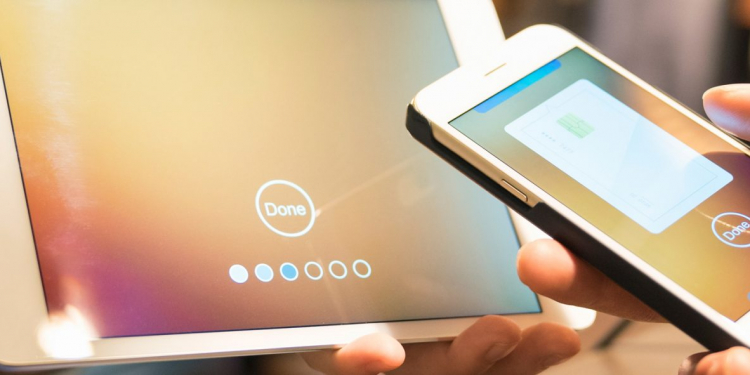The FINANCIAL — Mobile technology has clearly influenced and shaped the underlying forces driving digital payments. With a move from the desktop to the consumer’s pocket, 3G changed the way we think about our access to information. According to Mastercard, 4G massively accelerated the shift to mobile and digital, ushering in an era of innovation, economic value, and paradigmatic social change. For many, mobile payments became the default setting for ride-hailing services, food delivery, and other new commerce experiences.
5G is similarly poised to change the business and technology of payments. Low-cost connectivity and real-time access to hyperintelligent services will change the way we think about the distinctions between digital and physical experiences. Beyond accelerating the trends of the last two decades and creating new avenues for innovation and profit, 5G will invite opportunities to rethink where, how, and with whom payment transactions occur Mastercard notes.
Expanded acceptance and evolved experiences
A predictable outcome of 5G will be the growth in acceptance locations for the consumer. Within the last five years, digital payment acceptance has accelerated around the globe as software or cloud-based point-of-sale solutions are increasingly deployed onto tablets and smartphones. As the cost of connectivity and overall technology falls, we should expect even more devices and objects to be enabled with acceptance capabilities.
We should also expect a similar explosion in the number of devices and objects fitted with connected sensors. These sensors will provide information about device users and the environmental conditions in which they sit. The result is a web of virtual nerve endings for cloud- and edge-based solutions that can inform, enhance, and initiate payment experiences.
According to Mastercard, within the construct of this new acceptance environment, merchants will gain flexibility to rethink how, when, and where customer interactions — including payments — take place. Mixed reality such as AR can move digital experiences off the smartphone screen and deliver endless aisle or virtual mall experiences. AI assistants, already proliferating across every imaginable consumer device, will continue to drive the use of voice and chat in merchant interactions.
Furthermore, 5G will support an intelligent and responsive bridge between the consumer’s device (containing consumer preferences) and a merchant’s physical infrastructure. Permissioned connections will then provide merchants with the underlying insights to deliver personalized service at contextually relevant moments, changing how we think about consumer engagement before and after the payment transaction.
Machine-to-machine and small-ticket payments
In addition to broadening acceptance, 5G may change the participants in a typical transaction. Through the Internet of Things, 5G could support use cases whereby autonomous and semi-autonomous devices and objects initiate transactions on their own. HVAC units might monitor air conditions and utilization rates to optimize the replacement of filters. Sensors embedded in the soil might purchase seed or fertilizer to maximize expected yield and profitability. With the appropriate controls, the need for human involvement in some transactions might be eliminated altogether.
These machine-to-machine (M2M) interactions will have unique characteristics from today’s “traditional” consumer payment. For example, M2M payments will often need to support smaller, more frequent transaction processing models. With the ubiquitous connectivity, 5G can facilitate any space, item or service that can be provided on a fractional or pay-per-use basis. These M2M transactions are as likely to occur between physical devices (tolls and parking) as they are between physical devices and cloud services (accessing data or analytics).
Preparing for the future
That there will be impacts from 5G seems all but a certainty. How information moves, how much information is moving, and how we are connecting to one another are core to the idea of a transaction, the modern partnership, and the very definition of a network. In that light, it is hard to imagine any industry that will not see measurable — and possibly unexpected — change resulting from 5G over the next decade, let alone those built on the sharing of information.
For payments, 5G will expand the notion of what is possible and expected before, during, and after the transaction. Through high-speed, always-on connections, consumers will have more choices, information, and personalized content at their fingertips. Merchants — from global giants to gig workers — will unlock access to more information about their markets, products and customers. Machines, devices and even objects will actively participate in transactions. In-store experiences will transcend the four walls of the shop, while digital interactions are moved outside of the living room.
And, throughout this transformed ecosystem, it will be imperative that we embed the appropriate levers of consumer controls and security. This will ensure that as transactions move to an increasingly automated experience, we can maintain the trust necessary for the ecosystem to flourish.
Launched in 2019, 5G is available in more than 50 markets today. As the infrastructure, device, and application footprint grows, some of 5G’s implications — though certainly not all — are becoming clear. But even in this uncertainty, the importance of preparing for the future should not be understated. With an open mind and a willingness to change, we can best take advantage of the opportunity ahead.
































Discussion about this post